Thinking about building naturally? We know it sounds exciting, but let’s be real—it also comes with a thousand questions that keep you up at night.
You wonder: “Will it be stable enough?” “Will it hold up in the rains?” “Can I actually live in it?”
But, let’s be honest, it always comes down to that one question that everyone asks, sooner or later: “How much will it cost?”
Well, guess what? We have the answer for you.
Table of Contents
Understanding Natural Building: What exactly is a natural building, and why is it becoming so popular?
- Before we talk about the cost of a natural building, let’s pause and ask ourselves: What exactly is a natural building? We seem to have forgotten. Just a century ago—before the widespread use of cement—every building was a natural building. Isn’t it embarrassing that we abandoned these structures, which have stood tall for centuries, weathering the fiercest heat, torrential rain, raging winds, and even disasters?
- Yet somehow, we shifted to cement, a material that struggles to last even a few decades. And now, do we dare to compare it with nature itself? How foolish have we become? What happened to our wisdom?
- A natural building is crafted from materials like mud, lime, bamboo, wood, stone, and plant admixtures—all sourced from the nature around you. It’s more than just a structure; it is an extension of us, who live in it, a reflection of our harmony with our environment.
- Let’s not forget this simple truth as we consider the cost. Because maybe, just maybe, the true cost isn’t only in money, but in what we’ve lost by forgetting where we came from.
Before starting a natural building project, it’s essential to understand its principles and possibilities. This foundational knowledge helps ensure your vision matches practical realities and allows for a smooth transition from idea to execution. To gain this understanding, consider joining our Combo Hands-on Workshop or enrolling in our Online Course.
The Turn of the Tide: Why are more people choosing natural buildings and how this affects costs?
- In our rush towards industrial and digital advancement, we’ve lost touch with nature. Our focus shifted from living in harmony with the environment to manipulating it for mass production. This change from ‘Crafting’ to ‘Production’ set off a chain reaction of problems.
- Today, we see a resurgence of natural processes in various sectors like food, healthcare, and clothing. However, these natural products often come with a higher price tag compared to their commercial counterparts. Here’s a snapshot from each industry:
- Food Industry: 1 kilogram of regular rice is priced at 40-60 INR, whereas organic rice can cost 150-250 INR per kilogram.
- Textile Industry: 1 meter of cotton-polyester blend fabric is 80-100 INR, but 1 meter of pure organic cotton costs 250-500 INR.
- Healthcare Industry: A 100-gram commercial soap costs around 40-60 INR, while an organic soap ranges from 200-600 INR.
- Construction Industry: The same principle applies here as well. Where conventional cement building costs range from 2300 INR to 2800 INR per square foot, natural building can start at 3000 INR to 4500 INR per square foot if done by a builder/professionals.
- This shift shows that what was once cost-effective—just a century ago—has become significantly more expensive due to changes in how we process materials. But here’s the catch: these costs reflect buying ready-made products. When you take on the task yourself, the scenario flips.
- Understanding this helps us see the true cost of our choices and highlights the value of returning to simpler, more sustainable practices.
An Approximate Amalgamation: A breakdown of the different costs involved—from materials to labor.
- When it comes to natural building, the cost can vary widely due to factors like techniques used, methods of execution, and material availability. As of September 2024, prices range from 1500 to 4500 INR per square foot. This broad range reflects the difference between a DIY approach and a professional, turnkey solution.
- With over 15 years of experience in natural building, we’ve learned that there’s no fixed price per square foot; costs vary with each project. Factors such as the site, design, and labor play significant roles in determining the final cost.
- Based on the data we’ve gathered from various projects, we estimate that a professionally done natural building will typically cost between 3000 INR and 4500 INR per square foot. If you take on the project yourself, costs can start as low as 1500 INR per square foot currently.
- This gives you a rough idea of what to expect when budgeting for a natural building. It’s important to understand these variables to make informed decisions about your project.
Understanding Yourself: Defining your own goals and needs to align them with your budget.
- Before even thinking about the design, the first step in any building project is to understand exactly what you want. This may sound simple, but it’s often where people get stuck. In architecture, desires usually fall into three categories:
- Necessity – The basics required to function or live.
- Think of a small, well-ventilated room, a simple kitchen, and a single bathroom. It’s everything you need and nothing you don’t—a minimalist’s dream that keeps costs low.
- Comfort – A step up from the basics, where additional features make life easier and more enjoyable.
- This could mean adding a second bedroom, a larger kitchen, or an outdoor deck for relaxing. It’s not extravagant, but it adds a level of ease and pleasure to daily living.
- Luxury – The high-end approach, where aesthetics and premium materials take center stage.
- Picture a home with expensive windows and doors, custom woodwork, a spa-like bathroom, or a rooftop garden. These elements don’t just serve a function; they make a statement.
- Necessity – The basics required to function or live.
- Now, you probably realize that cost follows this same pattern:
Necessity < Comfort < Luxury. - But here’s the twist—you don’t have to pick just one. You can combine these elements to find a balance that suits your budget, needs, and style.
- For example:
- You might opt for a necessary layout but add a comfortable kitchen space for family gatherings.
- Or, you may keep most of the house comfortable but splurge on a luxurious master bedroom with custom furniture and a private terrace.
- So, what do you really want from your building? Is it a place that meets your basic needs, a home that adds comfort to your everyday life, or a statement of luxury? Your choices will shape not just your space, but also the cost.
- Understanding this balance is the key to creating a building that fits your vision without straining your wallet.
- Before even thinking about the design, the first step in any building project is to understand exactly what you want. This may sound simple, but it’s often where people get stuck. In architecture, desires usually fall into three categories:
Get our free Booklet with the Tips and Tricks on cost saving (Coming soon).
Understanding your site: How your site’s specific characteristics (like soil type, climate, terrain, etc.,) can impact the overall cost.
- When planning a natural building, your site’s location plays a crucial role in shaping both costs and environmental impact. Natural homes, whether cob, adobe, earthbag, etc., can be more affordable in rural areas with lower material and labor costs, but site accessibility and terrain can greatly affect your budget.
- Remote or hard-to-reach locations may require specialized equipment, more labor, or longer timelines, sometimes at the cost of environmental disruption.
- For instance, building on a steep hill might require heavy machinery, disturbing the ecosystem
- While deep forest sites can cause wildlife disruption and transportation challenges.
- The beauty of natural building lies in using local materials—mud, lime, sand, straw, bamboo, and wood, etc. Sourcing these nearby reduces both costs and your carbon footprint. However, when local materials aren’t available, transporting them increases both ecological and financial costs.
- There’s also a misconception that natural buildings are impractical in urban areas, but Manisha’s home proves otherwise. Her urban natural home stands as a testament to how these structures can thrive even amidst city life.
- Natural building, whether rural or urban, is about making thoughtful choices. You’re not just constructing walls; you’re building a relationship with the earth. Every decision, whether sourcing local materials, minimizing environmental damage, or reducing your carbon footprint reflects your commitment to sustainability.
Impact of Design on Cost: How smart design decisions can help keep your project within budget?
- There are major aspects to designing a Natural Building. Let’s see one by one.
- Design Complexity: The design of a natural home significantly impacts costs. Complex designs with intricate elements, such as curved walls or custom features, increase both labor and material expenses. These designs require specialized skills and additional time, raising labor costs. Detailed features like rounded windows or elaborate door frames necessitate more precise craftsmanship and thus, more expenditure.
- Structural Integrity: For flat roofs with longer spans, steel beams are often needed if suitable wooden beams are unavailable. However, sourcing reclaimed wooden beams from old houses can provide a more affordable and sustainable alternative. Using these recycled materials not only lowers costs but also adds character and reduces environmental impact.
- Aesthetic Value: Incorporating simple, cost-effective mud finishes can enhance both functionality and visual appeal, transforming walls into artistic features. While using naturally colored lime finishes may raise upfront costs, the long-term benefits of their beauty, durability, and low maintenance make them a worthwhile investment.
- Efficiency vs. Aesthetics: Simpler designs are generally more cost-effective. They use materials more efficiently and are quicker to build, reducing overall expenses. However, incorporating curves thoughtfully can balance aesthetics and function, offering both beauty and potential savings in structural costs.
- In summary, selecting a design involves finding a balance between our creative vision and practical needs, ensuring it fulfills our functional requirements while remaining within our budget. It’s essential to choose a style that resonates with us personally, enhancing our living environment. Ultimately, the goal is to create a space that reflects our identity without compromising on affordability.
Join our Exclusive Webinar about “Cost of Natural Building” to meet our team and also get exciting offers. Book you seat now! (coming soon)
Understanding Labour and Team: The cost implications of choosing the right professionals and skilled workers.
- In conventional construction, labor typically accounts for about 30% of the cost, while materials make up 70%. Natural building, however, often reverses this ratio—materials might only constitute around 40% of the cost, with labor making up the remaining 60%. This shift underscores the significant human effort and skill involved in natural building. The materials price is high in conventional buildings because of its sourcing that all the materials are outsourced. In natural buildings usually it is less because materials are sourced and manufactured from land or nearby regions. It can also increase if we purchase all the materials from various places like conventional buildings.
- Owner-Build: Reducing labor costs can be achieved by becoming an owner-builder. Managing the building process yourself and involving friends and family can cut expenses and add a personal touch. However, this approach requires considerable time and effort. Without professional expertise, mistakes are more likely, potentially leading to unforeseen costs. For small projects under 1,500 sq.ft. and ground floor constructions, we offer a combo workshop and also online course. You can choose between hands-on sessions where you build with our guidance and consultations or opt for lifetime access to our comprehensive online course. This combination ensures you get the support and resources you need to successfully complete your natural building project.
- Volunteers & Workshops: Using volunteers offers another way to save on labor costs. Many students and enthusiasts seek hands-on experience with natural building techniques. While this approach can reduce costs, it’s important to remember that volunteers are there to learn, and their pace and productivity may vary. Providing a safe environment with adequate food and accommodations is essential. Mismanaged expectations can lead to delays and increased costs if the project stalls before completion. Also we must understand that many who come for workshop or volunteer work are new to this craft so they are bound to make errors which reflect in the structural integrity of the building.
- Professional Labor: Hiring professionals, though initially more expensive, provides significant benefits. Skilled professionals work more efficiently, reduce errors, and ensure high-quality finishes, which are crucial for the durability and aesthetics of natural buildings. Investing in professionals can lead to fewer complications and a quicker completion, potentially saving money and resources in the long run. If you lack experience, consulting or hiring professionals can help avoid costly mistakes and ensure a well-constructed building.
- Training Unskilled Labor: In natural building, unskilled labor often requires training due to the limited availability of professionals. This creates a collaborative effort between owner-builders and the labor force. Training within each project helps build a skilled workforce, benefiting future projects and advancing the craft. Many owners and building professionals participate in our Combo hands-on workshop or enroll in our Comprehensive online course. By bringing their masons and labor teams, they ensure they stay within budget and effectively manage the building process. Whether choosing the hands-on workshop for immediate, practical experience or the online course for flexible, in-depth learning, this dual approach equips them with the skills and knowledge needed to see their natural building projects through to success.
- The Right Balance: Balancing owner-building, volunteers, and professional labor depends on your budget, timeline, and goals. Owner-building and volunteers can reduce costs but may require more time and patience. Professional labor, while more costly, offers speed and quality. Every decision should reflect a commitment to sustainability and respect for the earth. Cutting corners on labor might save money initially but could have environmental consequences if not managed carefully.
- Example of the Right Balance: For a 1,200 sq. ft. natural home, a balanced approach could be:
- Foundation and Structure: Use professionals for the foundation and structural elements to ensure stability and high standards.
- Wall Construction: Combine professionals for complex tasks with volunteers for less technical work, using locally sourced materials.
- Finishing Work: Rely on professionals for plastering, flooring, and detailed carpentry to ensure high-quality finishes.
- Example of the Right Balance: For a 1,200 sq. ft. natural home, a balanced approach could be:
- This approach balances cost, quality, and community involvement, ensuring a well-constructed, sustainable home.
Check out Our Youtube video on How to build a Cost effective Natural Building( coming soon)
Cost cutting in sourcing of Materials: Various methods to reduce the material costs from sourcing itself.
- Local Availability:
- Source materials like Lime, stones, and wood/bamboo from nearby areas to reduce transportation costs.
- Use locally abundant materials like fibers, admixtures/natural polymers for better enhancement of the building quality.
- Use Recycled or Reclaimed Materials:
- Reuse bricks, stones, tiles, or wood/bamboo and even mud from demolition sites or older buildings to save costs and reduce environmental impact.
- Look for second-hand or surplus materials like doors, windows, and fixtures, beams, etc.,
- Harvesting On-Site:
- If possible, harvest building materials directly from your land, such as soil for adobe or cob, and stones for foundations.
- Bulk Purchases:
- Buy in bulk for essential materials like mud, sand, stones, lime, wood, admixtures to get discounted rates.
- Consider community-based bulk buying with other builders to save on costs.
- Sustainably Managed Resources:
- Choose wood/bamboo from sustainably managed forests or certified suppliers to ensure responsible sourcing.
- For materials like lime, ensure they come from eco-friendly processing methods and local kilns
- Negotiate with Local Suppliers:
- Establish relationships with local suppliers for better deals, delivery options, or future discounts.
- Ask suppliers if they have overstocked or surplus materials, which are often sold at a lower price.
Choice of Techniques: How different construction techniques affect your budget.
- When planning on a natural building project, it’s essential to grasp how the construction process can be divided into four fundamental components: Foundation, Walls, Roofing, and Finishes. Each of these elements plays a crucial role in determining the overall cost, functionality, and aesthetic of your building.
- 1. Foundation: The foundation is the cornerstone of any building. It provides stability and support, ensuring that the structure can withstand environmental forces. Choices range from traditional rubble masonry to more specialized methods like pile foundations or sandbox techniques. The type of foundation you select will impact both the initial cost and long-term durability of your building.
Learn About Foundation. - 2. Walls: Walls are the defining feature of your building’s structure and contribute significantly to its thermal performance and appearance. Options include cob, wattle and daub, adobe, and compressed stabilized earth blocks (CSEB), etc. Each wall system has its own set of requirements and costs, influenced by factors such as material availability and the skill level of the labor force. Fusion of Wall systems can also be used like shuttered cob, wattle and cob, etc.,
Learn About Different Wall Systems. - 3. Roofing: The roof not only protects your building from the elements but also contributes to its overall aesthetic. Roofing options include sloping roofs, which, despite their complexity, offer distinct architectural appeal, and flat roofs, which can be more straightforward and economical. The choice of roofing material and design will affect both the cost and functionality of your building, particularly in relation to local climate conditions.
Learn About Different Roofing Techniques. - 4. Finishes: Finishes encompass the final touches that enhance the appearance and durability of your building. This includes plastering and flooring, with choices ranging from simple mud plasters to high-end lime finishes and basic earthen floors to natural stone surfaces. The selection of finishes not only impacts the visual appeal but also affects the maintenance and longevity of your structure.
For eg: Costly Lime plaster can be provided in water prone areas like bathrooms, water tanks whereas cost effective mud plasters can be applied above sill level in bedrooms, living room,etc.
Learn about Different Natural Finishes. - Understanding these four components—Foundation, Walls, Roofing, and Finishes—provides a clear framework for planning and budgeting your natural building project.
- To determine the choice of techniques one should understand the hierarchy of natural building which is provided in this Thannal’s Natural Plasters Booklet booklet.
- Each part influences the overall cost and performance of your building, and making informed choices will ensure that your project meets both your aesthetic goals and practical needs.
How to Make It Cost-Effective? Tips and Tricks: Practical strategies to reduce expenses without sacrificing quality.
- Choose Land with Good Drainage
- Flat or gently sloping land with good drainage reduces the need for extensive earthworks, which can be expensive.
- Example: Land with a natural slope for water runoff requires fewer modifications, saving on drainage systems.
- Optimal Solar Exposure:
- Orient your building to maximize sunlight, reducing long-term heating costs.
- Example: In cold climates, position main windows facing south for passive solar heating, reducing heating bills by up to 30%.
- Wider Foundations Are Cheaper:
- A wider, shallower foundation (such as a rubble trench) uses less material and is easier to construct than a deep foundation.
- Example: A rubble trench foundation costs less because it uses local stone and gravel without modern synthetic binders.
- Mud or Lime Mortar:
- Using mud or lime mortar in RR masonry saves costs and is environmentally friendly.
- Example: RR masonry with mud mortar can reduce foundation costs significantly when compared to more conventional alternatives.
- Use Local Materials:
- Sourcing materials locally saves on transport costs.
- Example: Cob or adobe made from site soil costs nothing but labor, while wood or stone might need to be transported, raising expenses.
- Earth as a Building Material: Earth-based materials like cob or adobe are cost-effective and environmentally friendly.
- Example: Adobe bricks made on-site are more affordable than purchasing wood or metal-based construction materials.
- Flat Roofs are Cheaper:
- In dry climates, flat roofs require fewer materials and simpler construction than sloped roofs.
- Example: A flat limecrete roof in a dry area can save roughly 20-30% on material costs compared to a pitched tile roof.
- Intermediate Roofs:
- In high rainfall areas, use intermediate flat roofs first and finish with sloped roofs later. This spreads costs over time.
- Example: In tropical climates, this approach reduces immediate roof costs by using bamboo or wooden rafters before investing in a permanent solution.
- Energy Efficiency:
- Optimize for Climate: Choose materials that suit your climate, reducing unnecessary insulation costs.
- Example: In warm climates, high thermal mass materials like adobe provide sufficient insulation without added expense.
- Mud Plaster is Inexpensive:
- Use mud plaster for interiors as it’s easy to repair and costs less when mud is procured from the site itself.
- Example: Applying clay plaster costs very less when compared to lime plasters if the clay is extracted from the soil of the site.
- Simple Flooring:
- Use tile flooring is a best cost effective and durable flooring when compared to other types of flooring such as cow dung flooring or lime flooring
- Example: For instance, terracotta floor tiles and local stone slab flooring are not only more affordable but also exceptionally durable. These materials can be creatively combined to enhance the aesthetic appeal of your space while maximizing functionality.
- Use Unskilled Labor:
- Earth-based techniques like cob or adobe can be worked by unskilled labor, reducing costs.
- Example: Hiring local labours like one good mason and 2 helpers for cob building can reduce labor costs by 40-50% compared to hiring professionals.
- DIY Portions of the Project:
- Learning basic techniques through workshops or online courses enables you to build yourself and save on labor.
- Example: Attending a natural building workshop to learn the natural building techniques can save you thousands in professional fees.
- Design for Future Expansion:
- Plan walls and layout to allow for easy future expansion, saving costs on future renovations.
- Example: Design a home with modular walls that can be opened for additional rooms as the family grows.
- Durable Materials Save in the Long Run:
- Invest in long-lasting materials for foundations and roofs, reducing repair costs.
- Example: A stone foundation with Lime pozzolanic mortar might cost more upfront, but it lasts significantly longer than alternatives, saving on future repairs.
- Join Natural Building Networks:
- Engage with the community to share resources, get free advice, and save on costs.
- Builders in online natural building forums can swap materials and share tips for sourcing affordable local supplies.
- Attend Workshops:
- Attending natural building workshops gives you hands-on skills, reducing reliance on paid labor.
- Also many of our students bring their own labor teams to hands-on workshops to upskill and stay within budget.
- Join the Combo workshop which has both Hand-on and Complete online library
- Join Our Free Webinar on Making a Natural Building Cost Effectively
Various Ways You Can Work: Exploring different approaches to construction and how they influence the cost.
- Over 15 years of experience in the field of Natural building we have summarized the ways which anyone who wants a home and Here are several approaches to building sustainably with varying levels of involvement, support, and cost:
- Self-Build with Online Course/Workshop: Most cost-effective option, ideal for small projects up to 1,500 sq. ft. and up to the ground floor level.
- Self-Build with Online Course/Workshop and Professional Consultation: Cost-effective option suitable for small projects up to 1,500 sq. ft., including ground and first floor levels, with online consultation and guidance from our professionals.
- Self-Build with Design, Site Visits, and Professional Consultation: Mid-range cost, ideal for medium-sized projects between 1,500 sq. ft. and 3,500 sq. ft., from ground floor up to the second floor, with comprehensive design, site visits, and professional support.
- Self-Build with Supervisor/Project Manager, Design, Site Visits, and Professional Consultation: Higher cost option, suitable for medium-sized projects between 1,500 sq. ft. and 3,500 sq. ft., from ground floor up to the second floor, with a supervisor or project manager in charge, along with design, site visits, and professional consultation.
- Turnkey Project with Full Professional Team: Not cost-effective, but suitable for medium to large-scale projects over 2,000 sq. ft., from the ground floor up to the third floor, with full support from our team, handling every aspect from start to finish.
- Thannal’s construction wing “Earth Projects” – earthprojects.thannal@gmail.com.
Conclusion: Building a Natural Home Starts with Learning
- Natural building is not just a construction method; it’s a philosophy that combines sustainability, creativity, and a connection to nature. Whether you are doing a self-build or opting for a turnkey solution, the journey always begins with gaining knowledge about the techniques, materials, and practices that make natural building successful.
- The key to any natural building project is learning—either through hands-on workshops or comprehensive online courses. This foundational knowledge helps you avoid costly mistakes, choose the right materials for your climate, and make decisions that ensure your home is safe, durable, and environmentally responsible.
- Cutting costs can be achieved by sourcing local or reclaimed materials, but it’s crucial to do so in a way that doesn’t compromise the quality and longevity of your home. Skimping on critical systems like electrical or fire safety will only lead to higher expenses later.
- By taking the time to educate yourself and plan carefully, you can create a beautiful, sustainable, and healthy home that reflects both your values and your budget.
- Join our Exclusive Webinar to meet our team and also get exciting offers. Book you seat now
Frequently Asked Questions
What are some effective ways to learn about natural building before starting a project?
- Workshops: Offer hands-on experience and the chance to learn from experts
- Self-paced Online Courses: Provide comprehensive knowledge and flexibility for learning anywhere, anytime.
- Natural Building Networks and Forums: Connect with a community of like-minded individuals for shared resources, advice, and support.
What exactly is natural building, and why is it gaining popularity?
- Natural building utilizes materials readily available in nature—mud, lime, bamboo, wood, stone—to create homes that exist in harmony with the environment. This approach, once commonplace, is seeing a resurgence due to:
- Sustainability: Natural building lessens the environmental impact compared to conventional construction.
- Health: Natural materials often create healthier living spaces, free from many of the toxins found in modern building materials
How much does a natural building cost compared to a conventional home?
- The cost of natural building in 2024 ranges from approximately 1500 to 4500 INR per square foot. This broad spectrum exists because of the variables involved:
- DIY vs. Professional Build: Building yourself significantly reduces labor costs, starting as low as 1500 INR per sq ft. Professionally built natural homes typically range from 3000 to 4500 INR per sq ft.
- Materials: Sourcing materials locally, using recycled components, or harvesting on-site can lower expenses.
- Design Complexity: Simpler designs are generally more cost-effective.
What are the main factors that influence the cost of a natural building?
- Location & Site: Remote locations or challenging terrain can increase costs due to accessibility and material transportation.
- Design Choices: Complex designs with intricate details or custom features require more skilled labor and specialized materials.
- Labor: Natural building is often more labor-intensive. Choosing owner-builder, volunteer, or professional labor will impact costs.
- Material Choices: While many natural materials are locally abundant, some specialty items may need to be transported, affecting the budget.
How can I reduce the cost of my natural building project?
- Become an Owner-Builder: Managing the process yourself and involving friends and family can significantly cut labor costs.
- Use Local and Recycled Materials: Sourcing materials locally minimizes transportation expenses, and using salvaged elements adds character while saving money.
- Optimize Your Design: Choose a simple, efficient design that minimizes material use and labor.
- Learn Basic Techniques: Attending workshops or taking online courses
What are the different ways to approach building a natural home, from DIY to professional?
- Self-Build with Online Course/Workshop: Most cost-effective, ideal for small, ground-floor projects.
- Self-Build with Professional Consultation: Suitable for small projects, offers guidance from experts throughout the process.
- Self-Build with Design & Site Visits: Mid-range option for medium-sized projects, includes design assistance and on-site support.
- Self-Build with Project Management: Higher cost but offers comprehensive oversight from a dedicated supervisor.
- Turnkey Project: Least cost-effective but provides a hands-off experience with professionals managing all aspects.
What are the four essential components of a natural building, and how do they affect cost?
- Foundation: The base upon which everything rests; rubble trench foundations using local stone can be a cost-effective option.
- Walls: Define the structure and thermal performance; cob, adobe, and wattle and daub are affordable choices.
- Roofing: Provides protection from the elements; flat roofs with locally sourced materials can be more economical in some climates.
- Finishes: Enhance appearance and durability; mud plasters and natural flooring options like terracotta tiles or local stone are affordable and aesthetically pleasing.
How does the choice of natural building techniques impact the overall cost?
Each element of a natural building—foundation, walls, roof, finishes—offers a range of techniques, each with cost implications.

Dharan Ashok
This article is by Natural builder and Architect Dharan Ashok. This article is a part of the Thannal Homes series


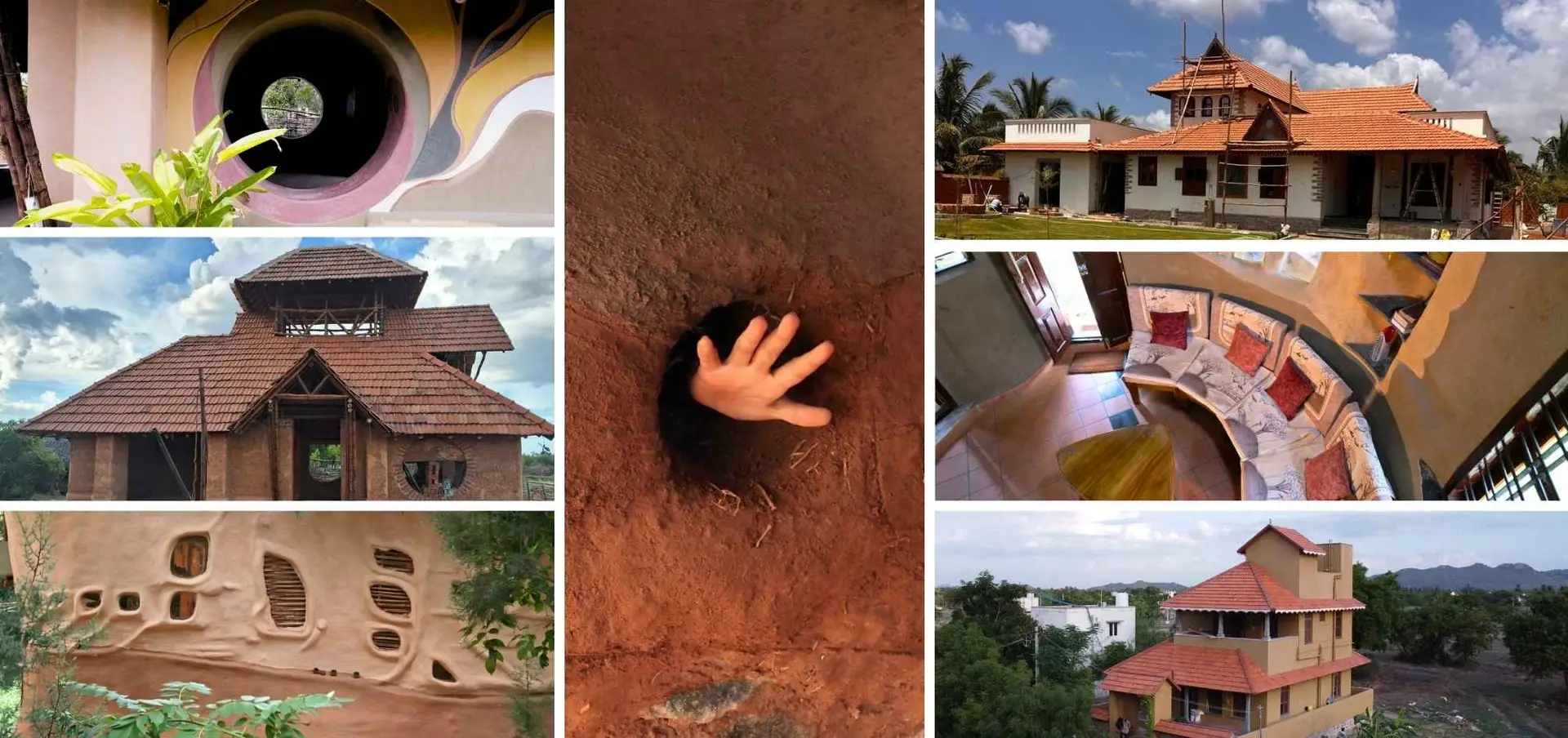
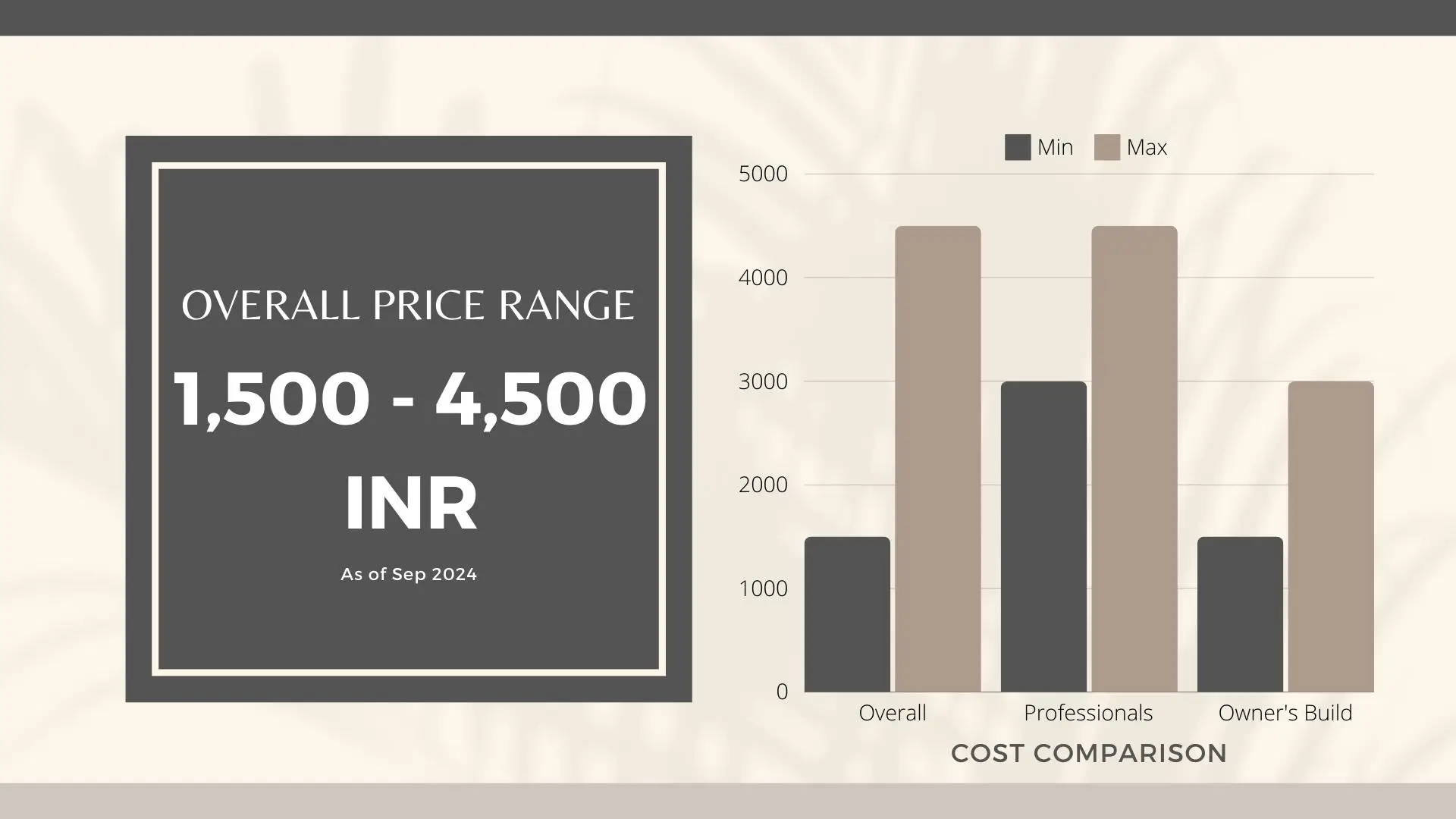
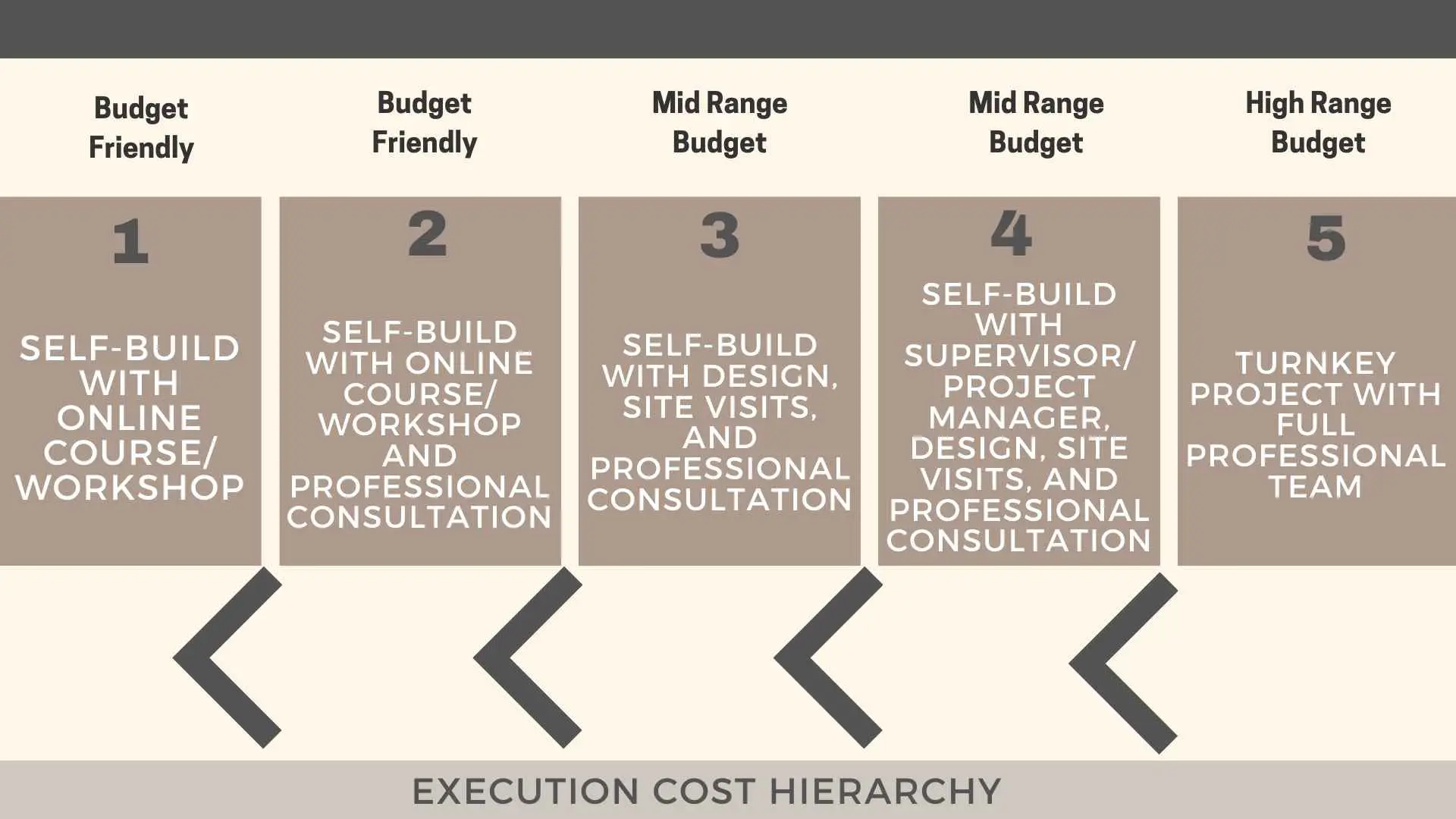
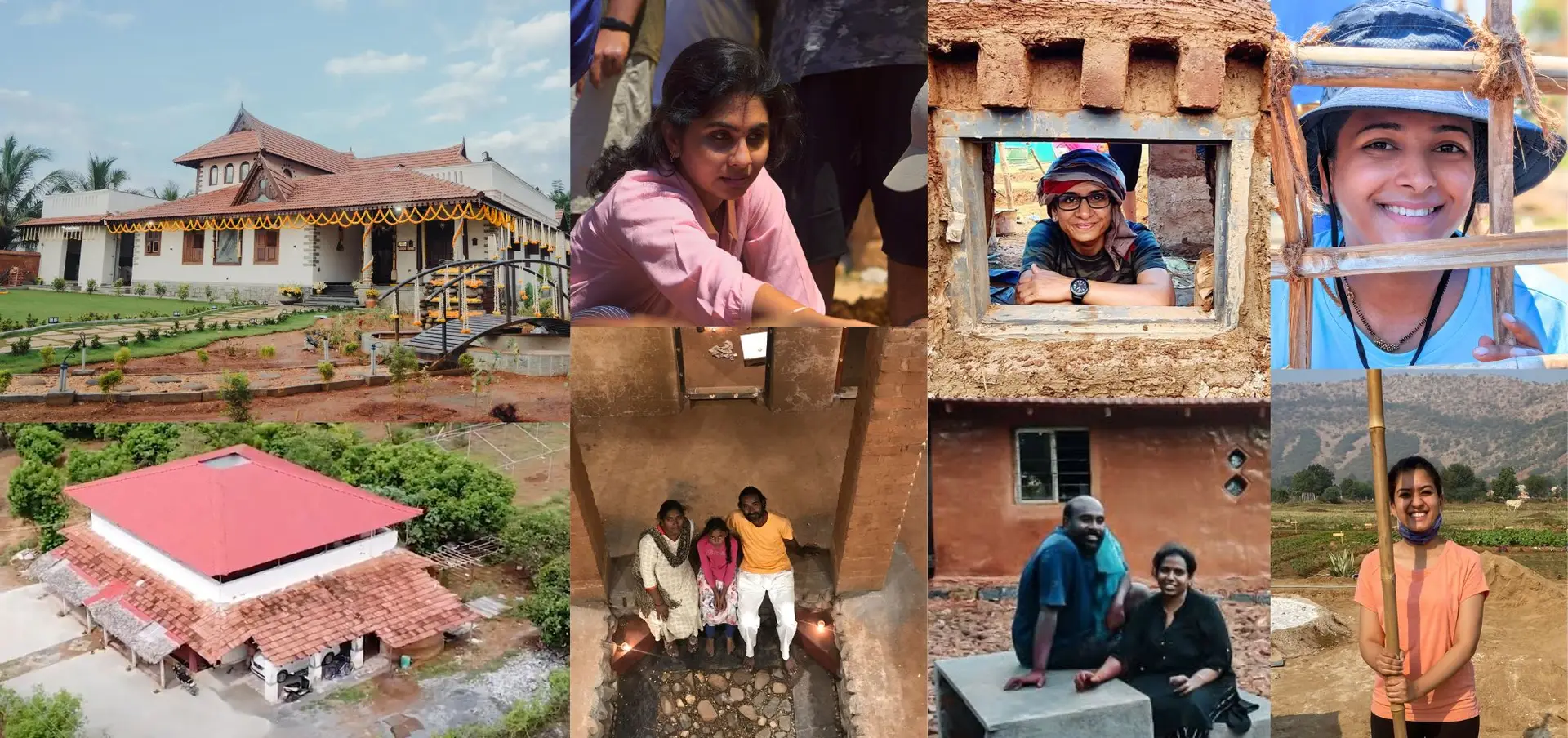
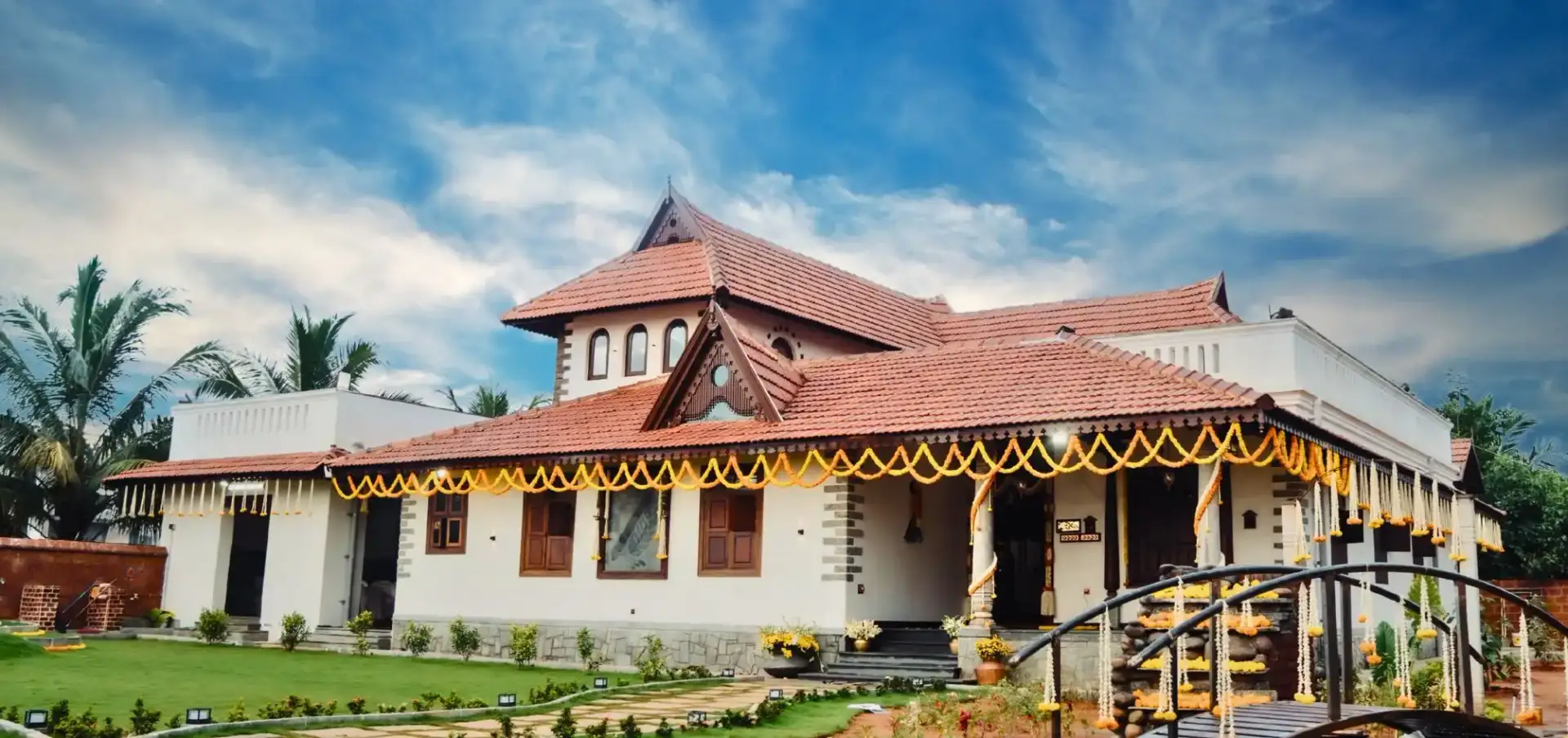
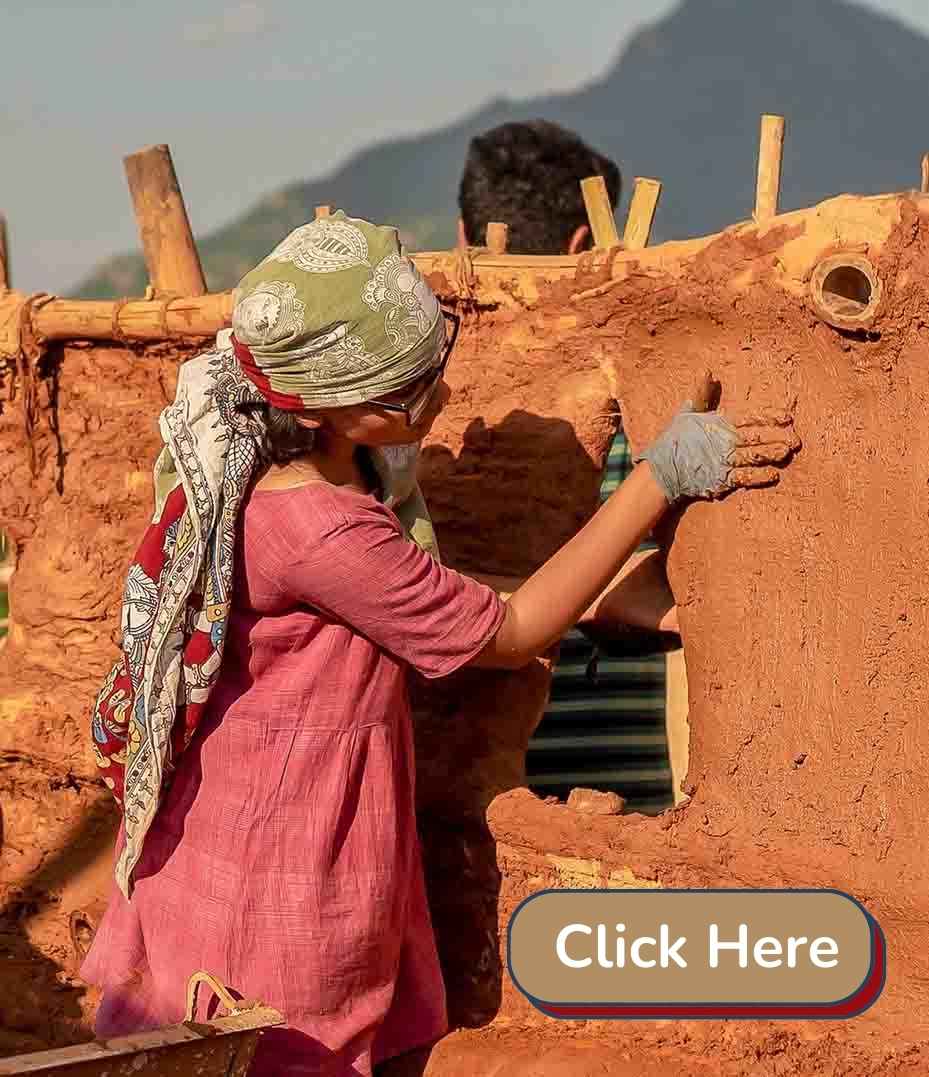
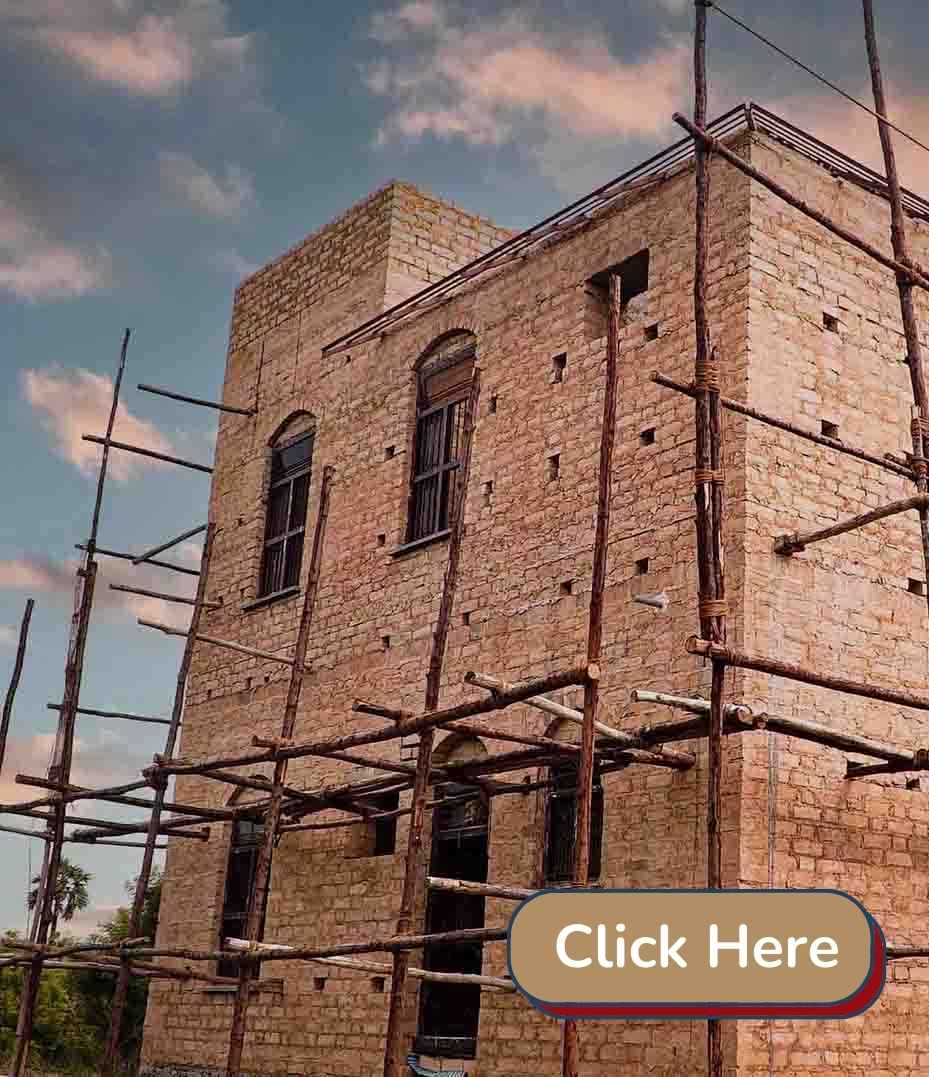
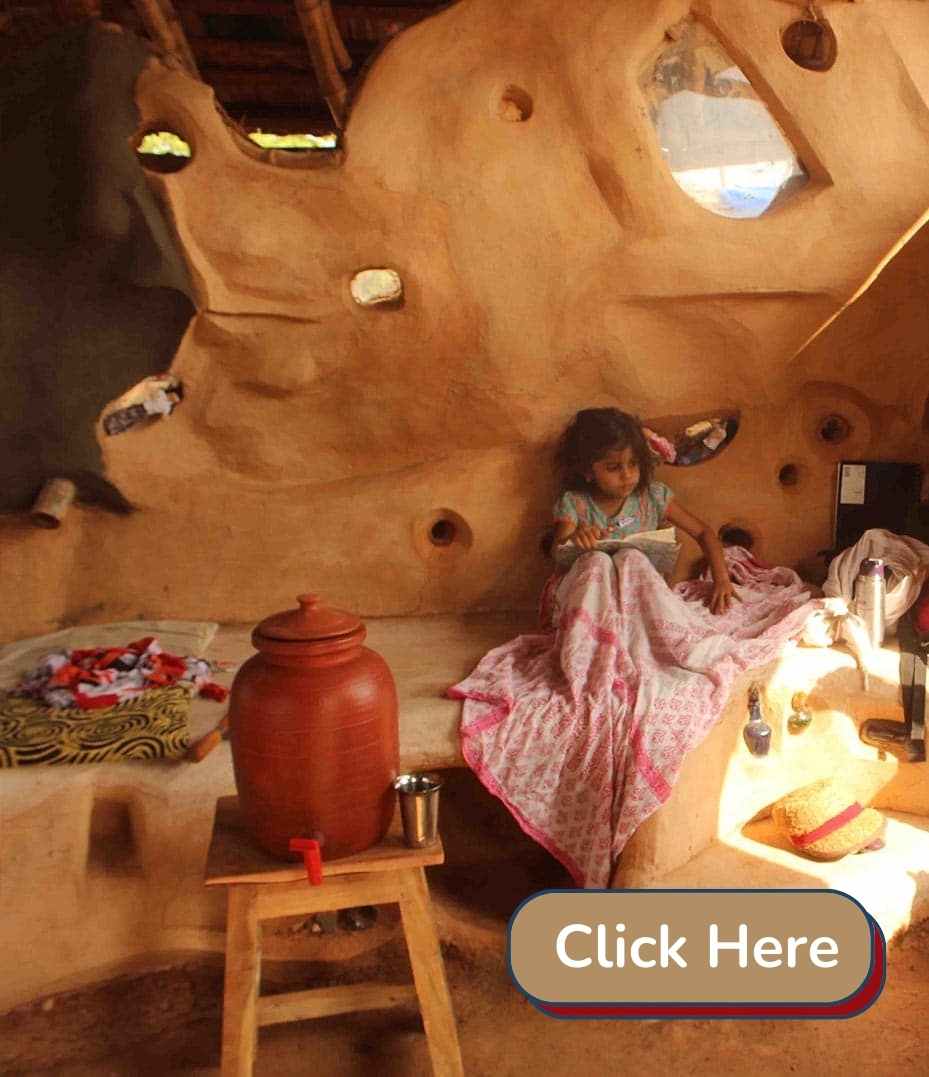


3 thoughts on “Cost of Natural Building?”
Namaste Somashekarji,
Thank you for your kind words. “ಮರಳಿ ಮಣ್ಣಿಗೆ” says it all—your encouragement means a lot to our team.
Realistic and thought provoking concept. You people are doing a great job. It is good to go ‘ಮರಳಿ ಮಣ್ಣಿಗೆ’ (back to earth).
Thank you for such a detailed and informative article